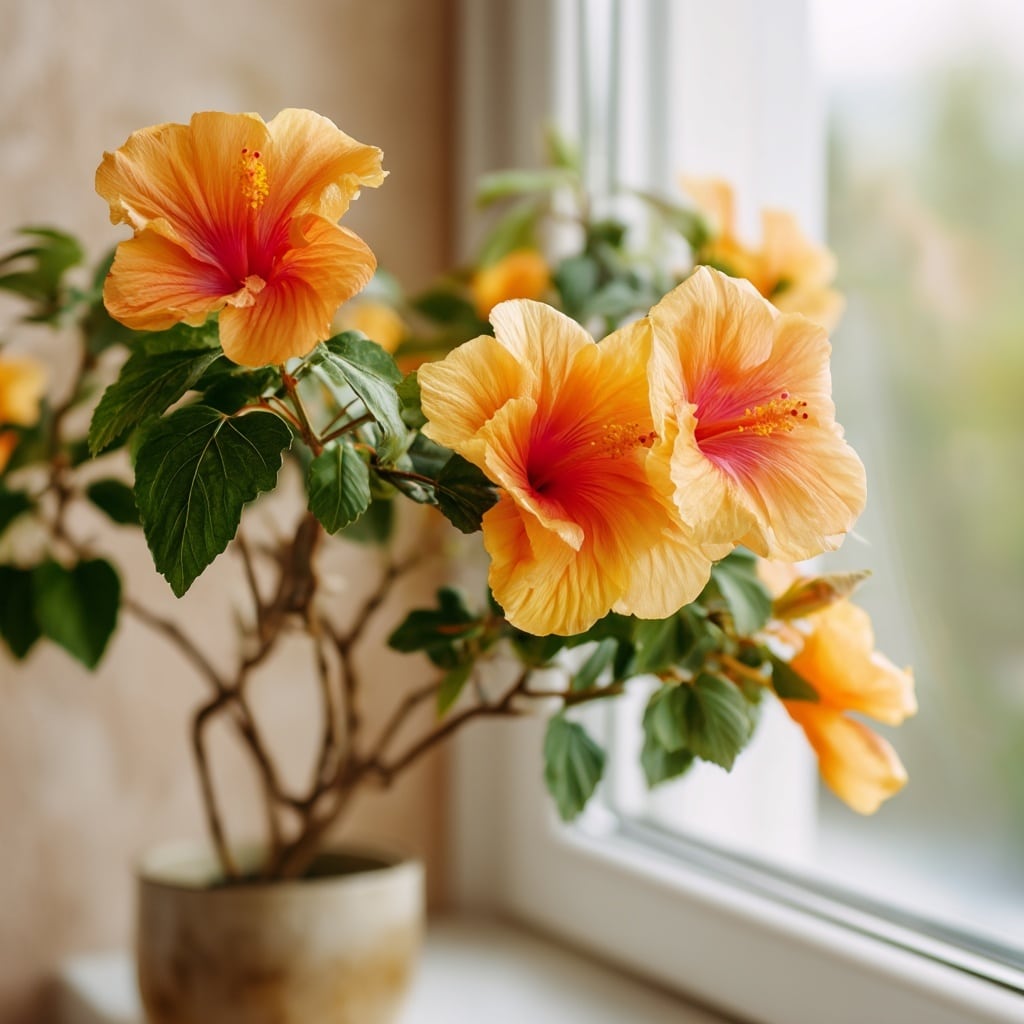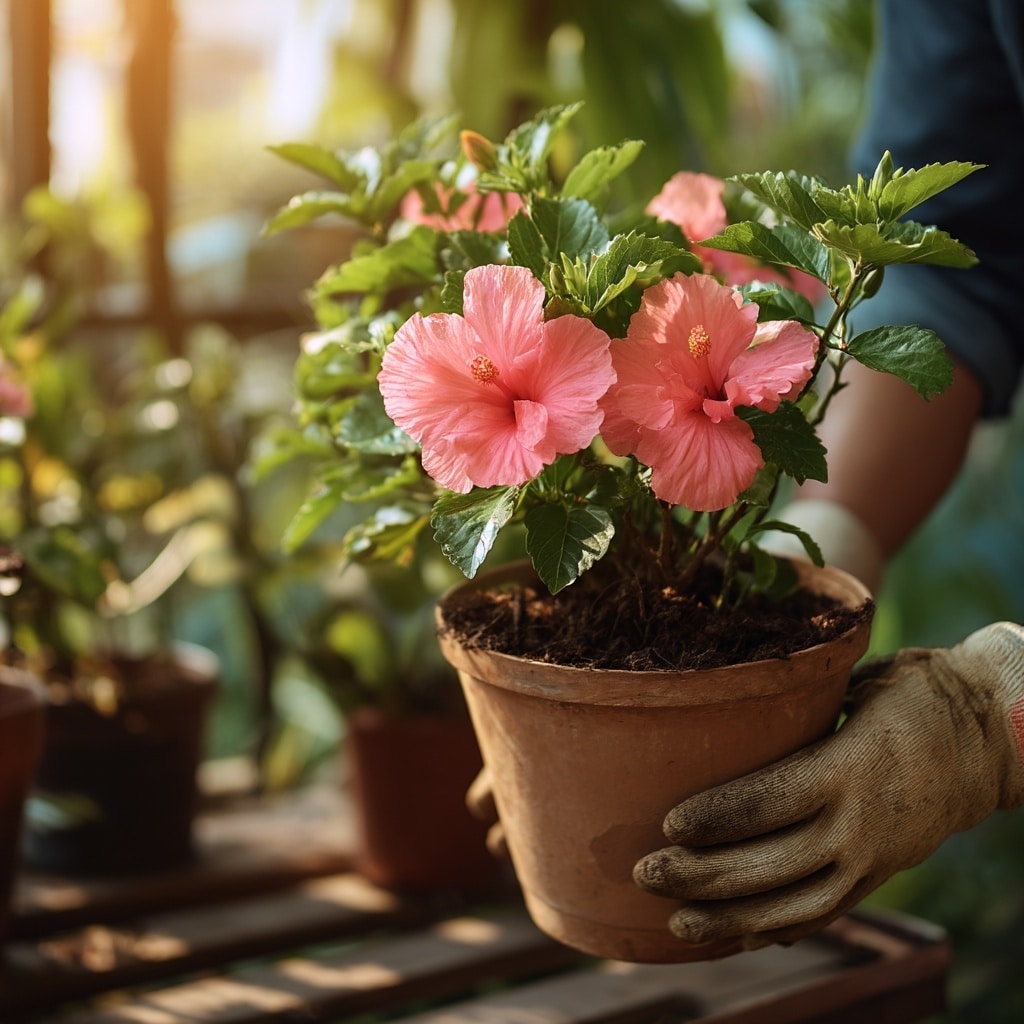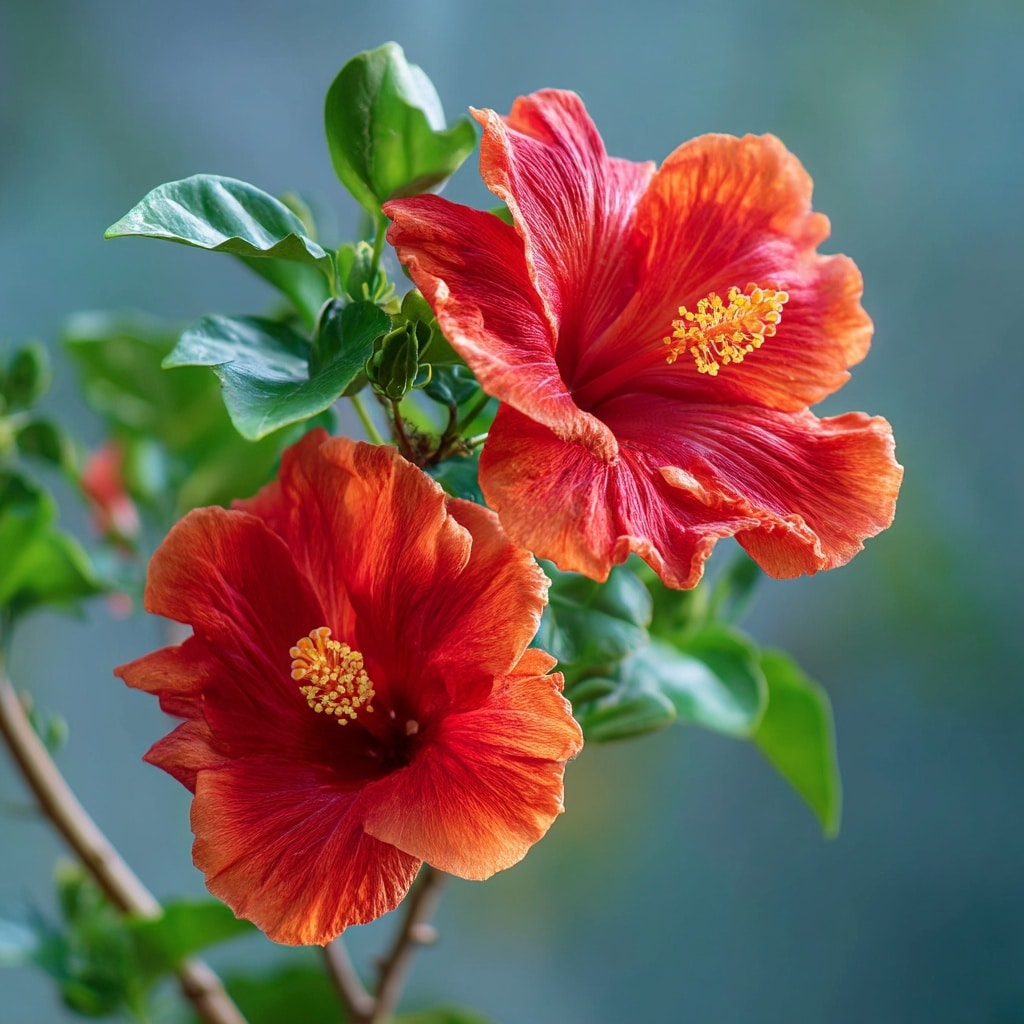Tropical Hibiscus is a vibrant, sun-loving plant that brings bold, exotic beauty to patios, balconies, and indoor spaces alike. Known for its striking, trumpet-shaped flowers in dazzling shades of red, orange, pink, and yellow, this tender shrub thrives when given the right care year-round. Whether you’re placing it outdoors in the warm summer sun or keeping it cozy indoors during colder months, understanding how to nurture tropical hibiscus is key to keeping it lush and blooming. With a bit of attention and the right environment, tropical hibiscus can reward gardeners with continuous color and a touch of the tropics at home.
Table of Contents
Summer Care for Tropical Hibiscus
During the summer months, tropical hibiscus thrives outdoors, basking in bright light and warm temperatures. Place your plant in a spot that receives partial to full sun, ideally getting at least 6 hours of sunlight daily. A sunny deck or patio makes an ideal location, as long as it’s protected from harsh, drying winds.
Because tropical hibiscus grows vigorously in summer, expect the soil to dry out quickly. Keep the soil consistently moist but not soggy—water thoroughly when the top inch of soil feels dry. Avoid letting the plant wilt, as this can stress the roots and reduce flowering.
To encourage nonstop blooms, feed tropical hibiscus with a balanced, water-soluble fertilizer every two weeks. Organic options like fish emulsion or compost tea also work well, especially for gardeners seeking a more sustainable approach. Regular feeding ensures lush foliage and vibrant flowers throughout the season.
Pruning is optional but helpful if you’re managing size. A light summer trim can shape the plant, but keep in mind it may temporarily reduce flowering. Always use clean, sharp tools when cutting back branches.
Watch for Common Summer Pests:
- Aphids
- Spider mites
- Whiteflies
- Occasionally: Mealybugs and scale
For minor infestations, a strong spray of water or insecticidal soap can be enough. If problems persist, consider neem oil or horticultural oils, but avoid spraying during peak sun hours to prevent leaf burn.
Autumn & Winter Care for Tropical Hibiscus

As cooler temperatures arrive, it’s time to transition your tropical hibiscus indoors to protect it from frost. This plant is sensitive to cold, and exposure to temperatures below 50°F (10°C) can cause significant stress or damage. Move the plant indoors before the first frost, ideally when nighttime temperatures drop below 55°F (13°C).
Choose a bright indoor location, such as a sunny window, sunroom, or heated greenhouse. The more light it receives, the better it will adapt. Some leaf drop is common after relocation, especially if the plant is moved abruptly or placed in low light. This is normal and doesn’t indicate poor health—leaves will often regrow once the plant adjusts.
During the fall and winter, reduce watering to prevent root rot. Water moderately, allowing the top inch of soil to dry out between waterings. Avoid overwatering, but also don’t let the soil stay bone dry for long periods.
Fertilizing should be paused or done sparingly during this dormant phase. If the plant is in a greenhouse with ample sunlight and remains actively growing, you can continue feeding it monthly with a diluted fertilizer.
Be mindful of indoor pest issues. Bringing plants inside may introduce aphids, spider mites, or whiteflies. Inspect leaves regularly, especially the undersides, and treat early with insecticidal soap or neem oil if needed. Keeping your tropical hibiscus clean and pest-free during winter helps ensure a strong comeback in spring.
Spring Care & Year-Round Indoor Growing Tips for Tropical Hibiscus

As spring returns and temperatures begin to rise, tropical hibiscus starts to awaken from its slower winter rhythm. Once the danger of frost has fully passed—usually by mid to late May in most temperate zones—you can begin transitioning your plant back outdoors. Choose a mild, overcast day for the move to reduce shock, and gradually acclimate it to increased sunlight over several days.
Before moving your tropical hibiscus outside, begin light fertilization in early spring (April or May) to support new growth. Once it’s outdoors and thriving in the warmer weather, return to a biweekly feeding schedule with a balanced fertilizer to encourage abundant blooming.
Keep an eye on the plant’s watering needs, as it may require significantly more moisture when exposed to sun and warm air. Don’t let the soil dry out completely—consistent hydration is key.
If you prefer, tropical hibiscus can be kept indoors year-round, provided it receives bright, direct light. In a sunny room or under grow lights, the plant can continue to thrive and even bloom occasionally. However, for the most prolific flowering, seasonal outdoor placement is ideal.
A heated greenhouse or sunroom offers the best of both worlds—consistent light, warmth, and humidity year-round. In such conditions, tropical hibiscus will often bloom continuously, with minimal stress from environmental changes.
Whether kept indoors all year or cycled in and out with the seasons, your tropical hibiscus will reward you with lasting color and tropical flair when given the proper care.
Other Tropical Hibiscus Species and Related Plants

While Hibiscus rosa-sinensis is the most widely grown tropical hibiscus, other species and close relatives offer unique characteristics and may suit different growing styles. Understanding their differences can help you choose the right plant for your space and care preferences.
Hibiscus acetosella
Known for its deep burgundy foliage, Hibiscus acetosella (also called Red-Leaf Hibiscus) can be grown similarly to tropical hibiscus. It performs well in containers during the warm season and can be overwintered indoors, though it may look sparse or unattractive in low light.
Hibiscus trionum
This lesser-known variety produces pale yellow flowers with dark centers and thrives outdoors in full sun during summer. However, it’s not well-suited as a houseplant and is best treated as an annual, easily regrown from seed each year.
Abutilon hybridum (Flowering Maple)
A relative of hibiscus, this plant produces lantern-like blooms and can be overwintered indoors. However, its stems tend to become leggy and weak in low light, and it rarely flowers during the cold season.
Anisodontea capensis
Another hibiscus cousin, Anisodontea grows quickly and flowers generously outdoors, but it performs poorly as a houseplant. Without a sunroom or greenhouse, it’s often best enjoyed as a warm-season annual.
When choosing alternative species, consider how they fit into your indoor space, light availability, and aesthetic goals. And remember: some true hibiscus species are winter-hardy and meant to stay outside year-round—these aren’t included here since their care differs significantly from that of tropical hibiscus.
Conclusion
Tropical hibiscus brings a splash of bold, exotic beauty to your home or garden with its vibrant flowers and lush foliage. With the right seasonal care—sunny summers outdoors, protected winters inside, and consistent watering and feeding—this stunning plant can bloom year after year. Whether you’re nurturing it on a sunny patio or in a bright window, tropical hibiscus rewards attentive gardeners with long-lasting color and charm. Choose the variety that fits your lifestyle, and enjoy a bit of the tropics wherever you are.





